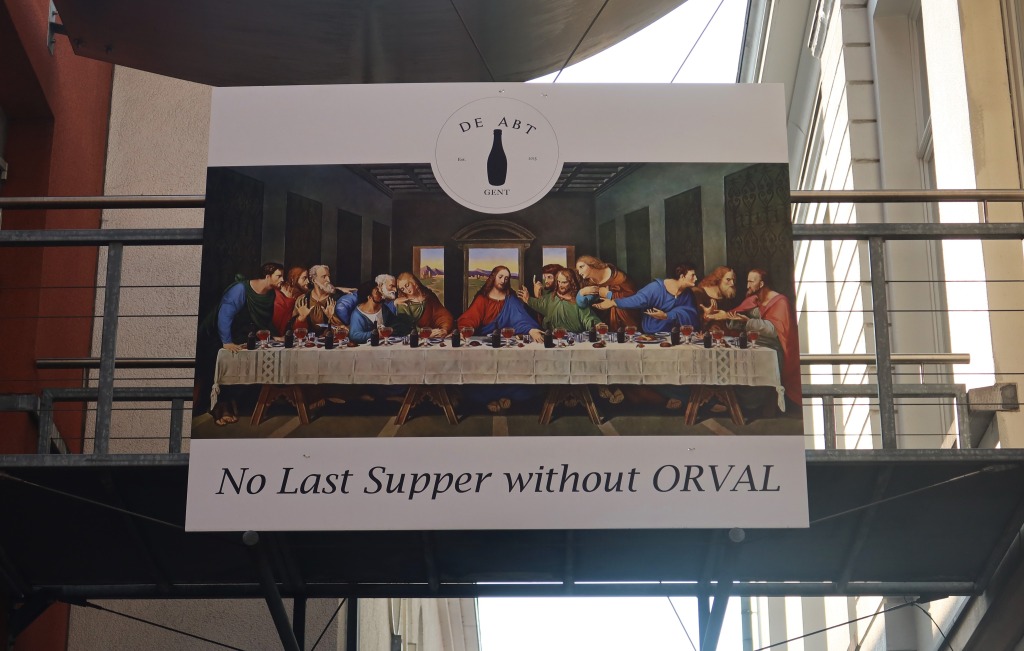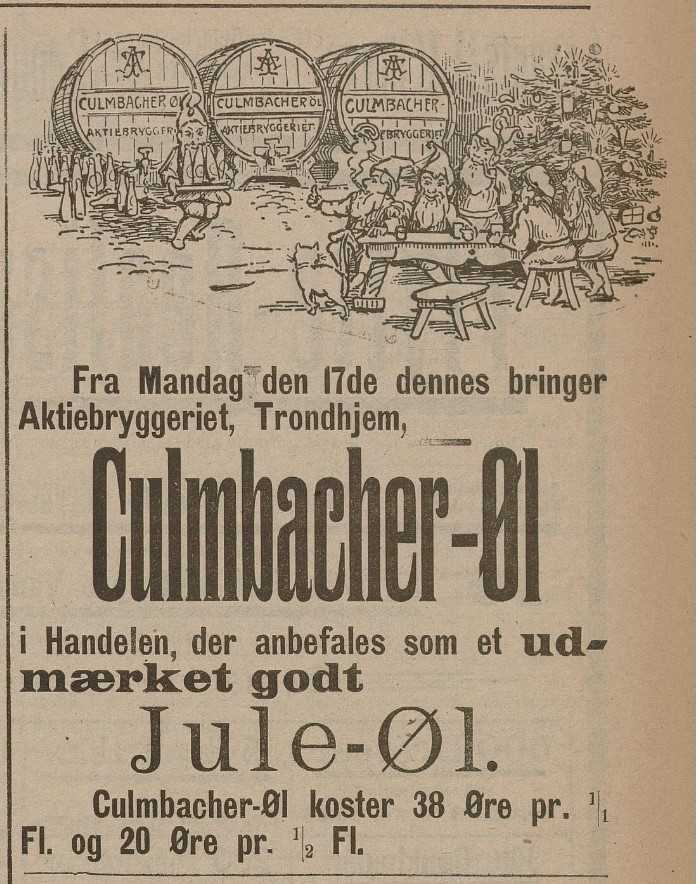
De Abt is a restaurant in Ghent, airy and modern, and at first sight their boast of a special connection to Orval seem dubious. But the building has a proud history.
Down a side street, Lange Kruisstraat , but still busy enough to get filled up by locals and tourists, you find the Abt. They call themselves the only Orval brasserie in Flanders. A banner outside proclaims “No Last Supper without ORVAL”, so the focus is in-your-face.

The choice of beer is obvious – by the time you read this you will have a choice of fresh and aged Orval, but there is a nice list of other beers, too, including a local Gruit brewed without hops . There is a three course Orval menu, which comes highly recommended. The starter is Orval croquettes, made with cheese from the abbey. The main course is a chicken stew with an Orval beer sauce. The dessert is a Orval sabayon, where the sweet wine is replaced by beer.
So, this is a showcase for the beer – but is this more than a marketing stunt from the wholesalers? The beer is widely available in Belgium and beyond, and there are lots of bares with the Orval Ambassador sign on the door, some of them with plaques of a series of vintages. The beer has a peculiar character of dry tartness, due to the fermentation in the bottle with the yeast Brettanomyces bruxellensis. The beer changes its aroma and flavor as the yeast does it trick. Som age their beer s for many years, but the broad consensus is that one year is enough for the character to evolve.

Orval is of course a Trappist monastery in Belgium, producing beer and cheese to finance the running of the abbey. They seem to be adaprting to the times, welcoming visitors to the historical buildings and to Sunday mass, and they even have a “Orval Youth at Prayer” gathering for 18-30 year olds in the summer.
The building that today houses De Abt was bought in the 1880s by a young entrepreneur named Karel Van der Cruyssen.
Karel ran a successful construction company, but he had wider ideas.Together with a self-employed colleague, in 1883 he founded the first middle-class organisation in Belgium. ‘Dieu et Patrie’ or ‘God and Fatherland’, which united the Ghent middle class with the Ghent bourgeoisie.. The organisation needed a club room for its activities. Karel acquired the building in the Lange Kruisstraat as a result. It became the meeting point for the Ghent middle class and small entrepreneurs.

Dieu et Patrie lives on to this day – The Union of Independent Entrepreneurs (UNIZO) is a Belgian association of entrepreneurs, small and medium-sized enterprises and liberal professions, with over 80 000 members.
Bu the good times came to an end.
. Karel joined the Belgian army when the First World War broke out in 1914 He soon rose to the rank of second lieutenant, and he convinced the sons of many Ghent entrepreneurs to follow his example. Many lost their lives in the conflict.
At the end of the war, Karel Van der Cruyssen was commanded for his bravery, making him one of the most decorated soldiers in Belgium.
After the war, Karel was never his old self again. In 1919, he moved to Normandy, where he joined the monastery of Notre Dame de la Grande Trappe. He was ordained priest six years later. From then on, Karel van der Cruyssen went by the name of Marie-Albert Van der Cruyssen. In 1926, with some fellow Trappist Cistercian monks he returned to Belgium with the task of rebuilding Orval Abbey. This 12th-century abbey was completely burnt down during the French Revolution and had since remained in ruins.
Brother Marie-Albert travelled the length and breadth of the country to collect donations and finance the reconstruction. However, Ghent entrepreneurs had not forgotten him and dug deep in their pockets to help fund the project. Ultimately, the Ghent middle class donated one fifth of the necessary capital.
Donations were not enough to run the Abbey. The Trappist monasteries aim to earn their own money, and support the local community instead of being dependent on them. Marie-Alberts experience as a businessman came in useful. He set up a brewery in the abbey in 1931, followed by a cheese factory a year later.

Five years after founding the brewery, Marie-Albert Van der Cruyssen was ordained 53rd Abbot of Orval, making him the first abbot of the reconstructed Orval Abbey. In 1950, Marie-Albert resigned due to serious health issues and died in 1955.
The present restaurant opened in 2015. If you want to get a feeling of the heritage of the building, you should contact them in advance and ask for a tour. Because the building has lots of historical artifacts connected with Karel Van der Cruyssen, the Dieu et Patrie, the Orval abbey and the beer.
There are photos, posters, diplomas and medals, there are beer bottles and glasses from various decades.










 With the huge range of beer books available, I was surprised there were no beer quiz books around.
With the huge range of beer books available, I was surprised there were no beer quiz books around.















 The Grill does not look like much from the outside. It probably had a more elaborate sign, perhaps windows with frosted glass and more trimmings some decades ago. Some details of hops and grapes shows that this was more upmarket in another age.
The Grill does not look like much from the outside. It probably had a more elaborate sign, perhaps windows with frosted glass and more trimmings some decades ago. Some details of hops and grapes shows that this was more upmarket in another age.
